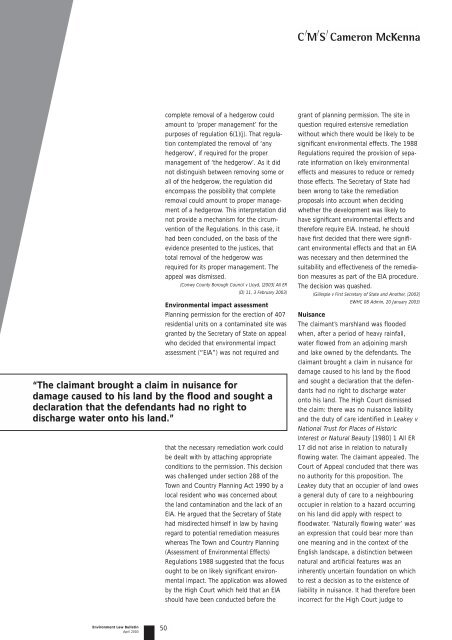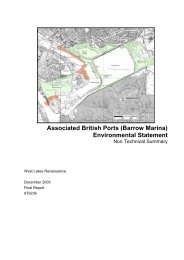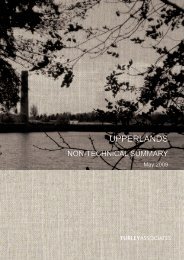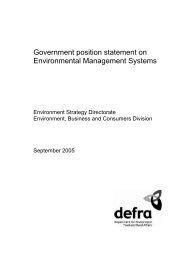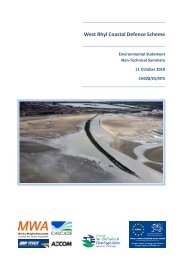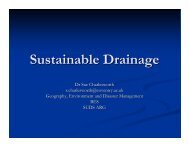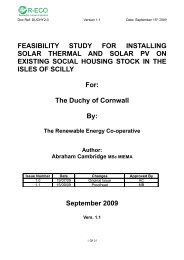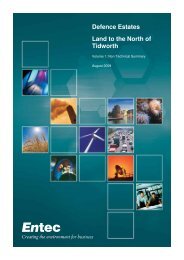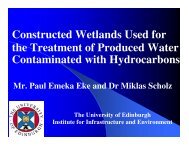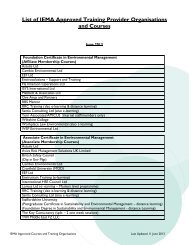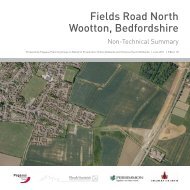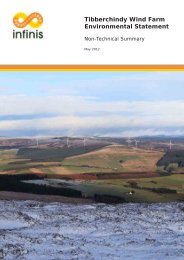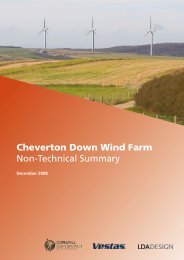Environment Law Bulletin - Institute of Environmental Management ...
Environment Law Bulletin - Institute of Environmental Management ...
Environment Law Bulletin - Institute of Environmental Management ...
You also want an ePaper? Increase the reach of your titles
YUMPU automatically turns print PDFs into web optimized ePapers that Google loves.
complete removal <strong>of</strong> a hedgerow couldamount to ‘proper management’ for thepurposes <strong>of</strong> regulation 6(1)(j). That regulationcontemplated the removal <strong>of</strong> ‘anyhedgerow’, if required for the propermanagement <strong>of</strong> ‘the hedgerow’. As it didnot distinguish between removing some orall <strong>of</strong> the hedgerow, the regulation didencompass the possibility that completeremoval could amount to proper management<strong>of</strong> a hedgerow. This interpretation didnot provide a mechanism for the circumvention<strong>of</strong> the Regulations. In this case, ithad been concluded, on the basis <strong>of</strong> theevidence presented to the justices, thattotal removal <strong>of</strong> the hedgerow wasrequired for its proper management. Theappeal was dismissed.(Conwy County Borough Council v Lloyd, [2003] All ER(D) 11, 3 February 2003)<strong>Environment</strong>al impact assessmentPlanning permission for the erection <strong>of</strong> 407residential units on a contaminated site wasgranted by the Secretary <strong>of</strong> State on appealwho decided that environmental impactassessment (“EIA”) was not required and“The claimant brought a claim in nuisance fordamage caused to his land by the flood and sought adeclaration that the defendants had no right todischarge water onto his land.”that the necessary remediation work couldbe dealt with by attaching appropriateconditions to the permission. This decisionwas challenged under section 288 <strong>of</strong> theTown and Country Planning Act 1990 by alocal resident who was concerned aboutthe land contamination and the lack <strong>of</strong> anEIA. He argued that the Secretary <strong>of</strong> Statehad misdirected himself in law by havingregard to potential remediation measureswhereas The Town and Country Planning(Assessment <strong>of</strong> <strong>Environment</strong>al Effects)Regulations 1988 suggested that the focusought to be on likely significant environmentalimpact. The application was allowedby the High Court which held that an EIAshould have been conducted before thegrant <strong>of</strong> planning permission. The site inquestion required extensive remediationwithout which there would be likely to besignificant environmental effects. The 1988Regulations required the provision <strong>of</strong> separateinformation on likely environmentaleffects and measures to reduce or remedythose effects. The Secretary <strong>of</strong> State hadbeen wrong to take the remediationproposals into account when decidingwhether the development was likely tohave significant environmental effects andtherefore require EIA. Instead, he shouldhave first decided that there were significantenvironmental effects and that an EIAwas necessary and then determined thesuitability and effectiveness <strong>of</strong> the remediationmeasures as part <strong>of</strong> the EIA procedure.The decision was quashed.(Gillespie v First Secretary <strong>of</strong> State and Another, [2003]EWHC 08 Admin, 20 January 2003)NuisanceThe claimant’s marshland was floodedwhen, after a period <strong>of</strong> heavy rainfall,water flowed from an adjoining marshand lake owned by the defendants. Theclaimant brought a claim in nuisance fordamage caused to his land by the floodand sought a declaration that the defendantshad no right to discharge wateronto his land. The High Court dismissedthe claim: there was no nuisance liabilityand the duty <strong>of</strong> care identified in Leakey vNational Trust for Places <strong>of</strong> HistoricInterest or Natural Beauty [1980] 1 All ER17 did not arise in relation to naturallyflowing water. The claimant appealed. TheCourt <strong>of</strong> Appeal concluded that there wasno authority for this proposition. TheLeakey duty that an occupier <strong>of</strong> land owesa general duty <strong>of</strong> care to a neighbouringoccupier in relation to a hazard occurringon his land did apply with respect t<strong>of</strong>loodwater. ‘Naturally flowing water’ wasan expression that could bear more thanone meaning and in the context <strong>of</strong> theEnglish landscape, a distinction betweennatural and artificial features was aninherently uncertain foundation on whichto rest a decision as to the existence <strong>of</strong>liability in nuisance. It had therefore beenincorrect for the High Court judge to<strong>Environment</strong> <strong>Law</strong> <strong>Bulletin</strong>April 200350


